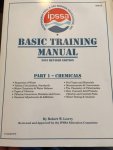So I recently had my first green algae bloom after my two large live oaks dropped their pollen this spring. So I added a dose of Diclor, filtrated for two hours to mix then added a flocculant and mixed for two hours. The next morning the dichlor and floc had done a fantastic job. The algae was dead as a door nail and flocced and dropped to the bottom of the pool.
Now came the hard part, getting the dead algae out of the pool.
I vacuumed most of it out but in the process (about a week long) I ended up stirring up the flocculated dead algae. So while the pool looks much better it still has a cloudy hew to it. I've let it sit and the flocced algae still creeps to the bottom and I'll vacuum again when it seems appropriate.
My questions for the forum are this:
1. Should I/could I add more flocculant now that it's been a week to makes sure all the suspend dead algae is clumped and dropped to the bottom of the floor? Or just be patient with the dosage I've already used?
2. Overflucculation. Is there such a thing and what could/would the dangers be?
This is my first post so thanks for your replies in advance!
Happy Swimming!
Drycreek.
Now came the hard part, getting the dead algae out of the pool.
I vacuumed most of it out but in the process (about a week long) I ended up stirring up the flocculated dead algae. So while the pool looks much better it still has a cloudy hew to it. I've let it sit and the flocced algae still creeps to the bottom and I'll vacuum again when it seems appropriate.
My questions for the forum are this:
1. Should I/could I add more flocculant now that it's been a week to makes sure all the suspend dead algae is clumped and dropped to the bottom of the floor? Or just be patient with the dosage I've already used?
2. Overflucculation. Is there such a thing and what could/would the dangers be?
This is my first post so thanks for your replies in advance!
Happy Swimming!
Drycreek.





